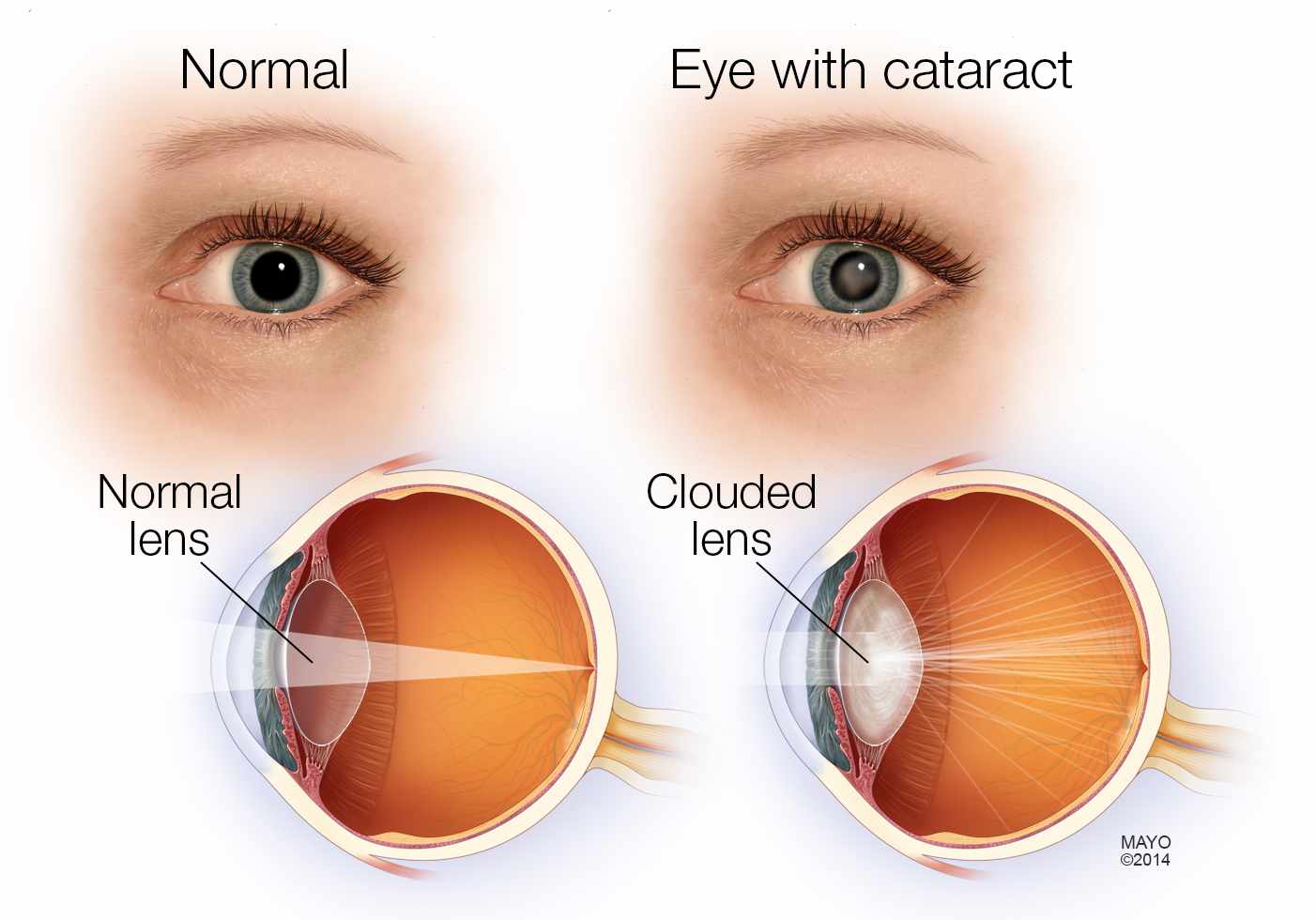A cataract is an eye disease in which the clear lens of the eye becomes cloudy or opaque, causing a decrease in vision. Although the word cataract to describe this condition has been part of the English language since only the 15th century, the eye disease has been recognized and surgically treated since ancient times.
The lens is a portion of the eye that is normally clear. It focuses rays of light entering the eye onto the retina, the light-sensitive tissue at the back of the eye. In order to get a clear image onto the retina, the portions of the eye in front of the retina, including the lens, must be clear and transparent. The light striking the retina initiates a chemical reaction within the retina. The chemical reaction, in turn, initiates an electrical response which is carried to the brain through the optic nerve. The brain then interprets what the eye sees.
In a normal eye, light passes through the transparent lens to the retina. The lens must be clear for the retina to receive a sharp image. If the lens is cloudy from a cataract, the image striking the retina will be blurry or distorted and the vision will be blurry. The extent of the visual disturbance is dependent upon the degree of cloudiness of the lens.
Most cataracts are related to aging. Cataracts are very common in older people. By age 80, more than half of all Americans either have some degree of cataract or have already undergone cataract surgery in one or both eyes. By age 95, this percentage increases to almost 100%. A cataract can occur in either or both eyes. Individuals with a cataract in one eye usually go on to develop a cataract in the other eye as well. A cataract is not contagious and cannot spread from one eye to the other or from person to person. Cataracts do not cause the eye to tear abnormally. They are neither painful nor make the eye itchy or red.



 Contact Us
Contact Us






 Hospitals
Hospitals
 Doctors
Doctors
 Diagnostic
Diagnostic
 Pharmacy
Pharmacy
 Health Tips
Health Tips
 Blog
Blog

























Comments